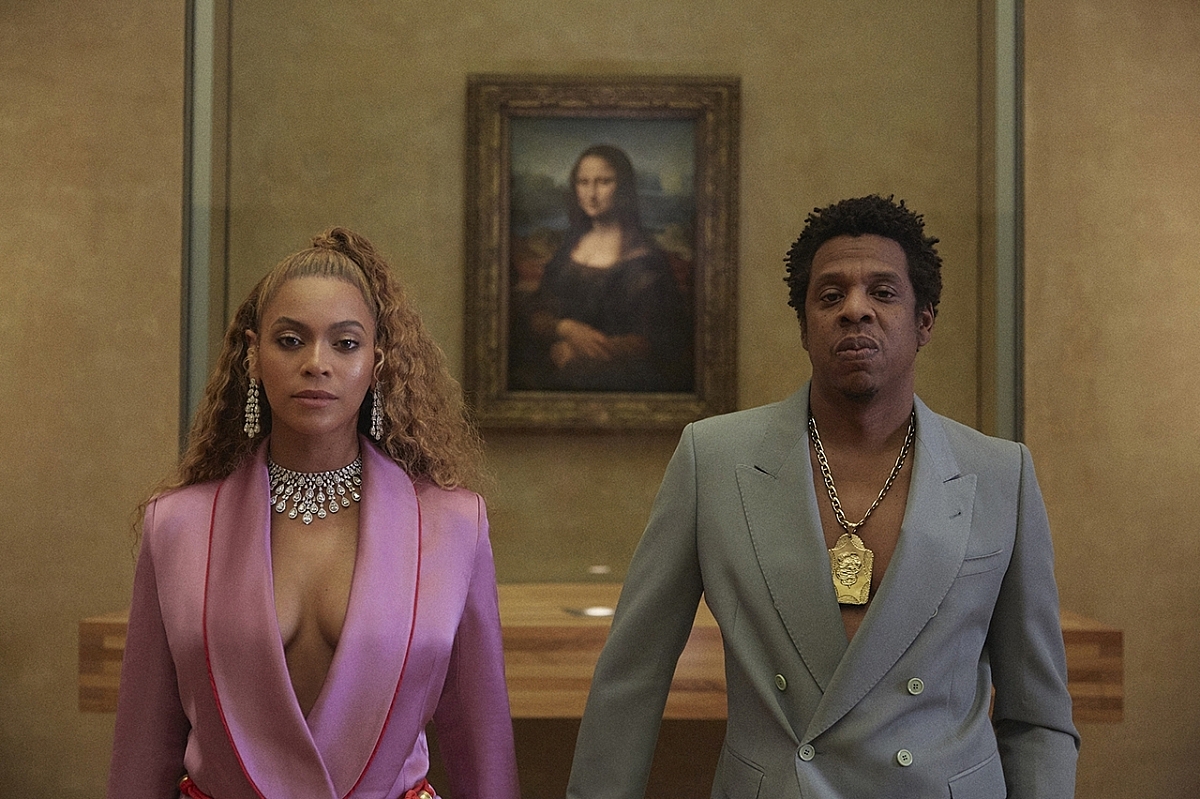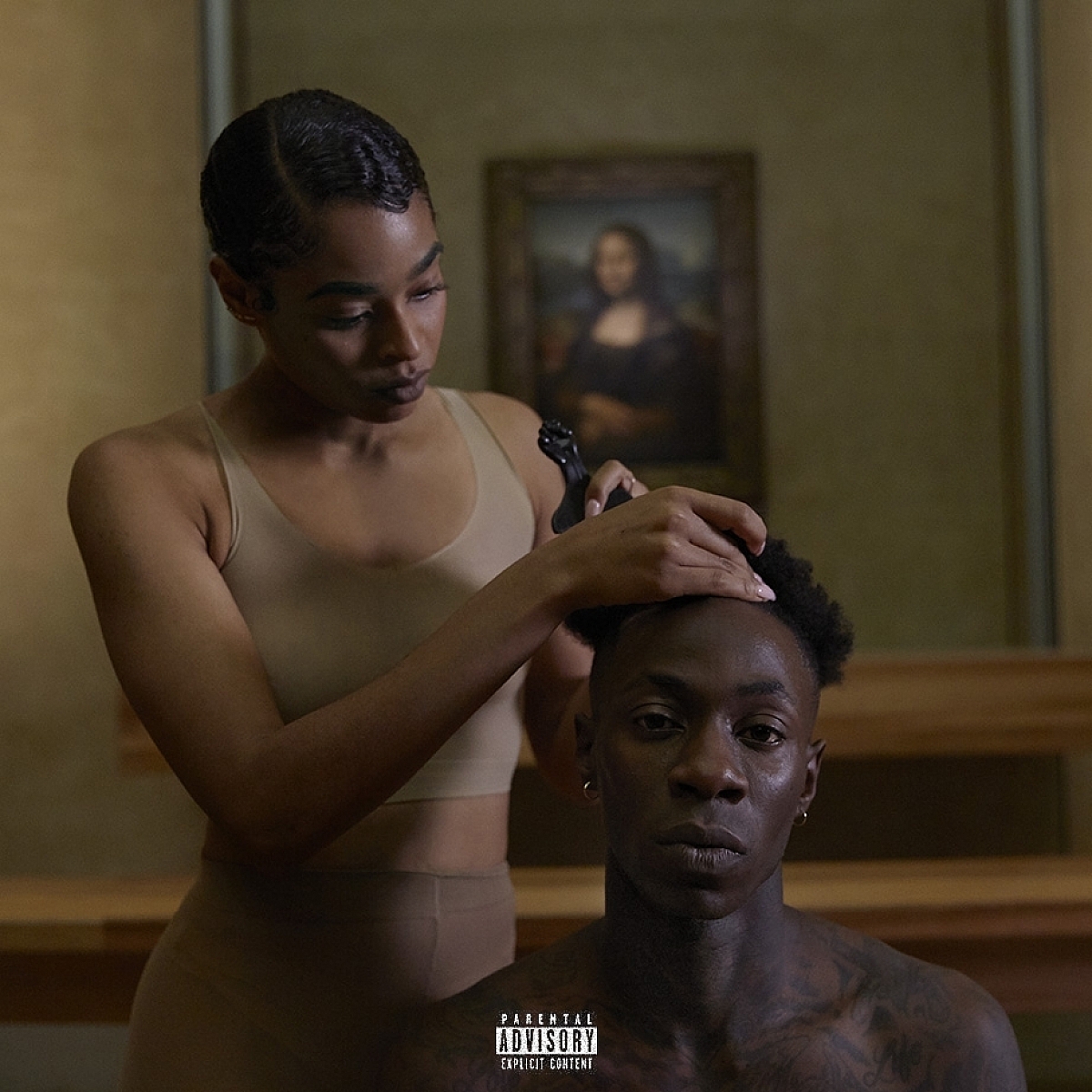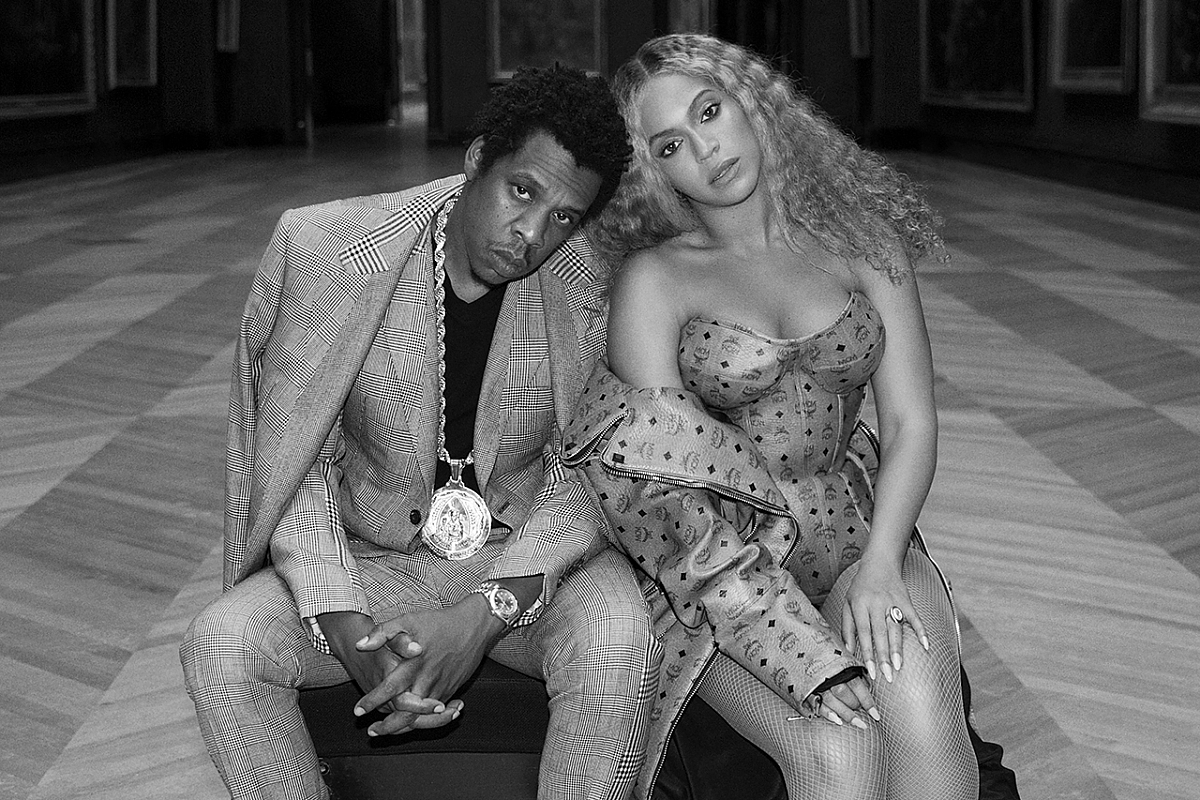The Carters (Beyoncé & Jay-Z) 'Apeshit' masterpiece music video captured on Kodak 35mm

Beyoncé and Jay-Z pictured beside Leonardo da Vinci's Mona Lisa during production of their 35mm music video "Apeshit." Photo by Robin Harper.
Over two consecutive nights in May, The Carters (Beyoncé and her husband Jay-Z) secretly headed to the Louvre Museum in Paris with a small dance troupe and minimal camera crew. And there, amongst the historic gems seen by millions of visitors, they created their own modern work of art – on 35mm film.
Directed by Ricki Saiz through production house Iconoclast, the stylish, six-minute music video for their song Apeshit is the debut track from The Carter’s new album, Everything Is Love. The video reveals the famous couple, together with their ensemble, performing in front of some of the world’s greatest paintings and marble sculptures. These include Jacques-Louis David's monumental canvas The Consecration of The Emperor Napoleon, the Great Sphinx of Tanis, and Leonardo da Vinci's Mona Lisa.

Album art from The Carter’s "Everything Is Love" album. Photo by Robin Harper.
The resulting vignettes play to a significant dramatic device, interposing 21st century black artistic voices into the narrative of the white, Western, male-dominated, status quo.
At the end of the promo, The Carters – Beyoncé dressed in blushing pink silk and Jay-Z sporting a lime green suit – stand on either side of the Mona Lisa, creating a new image, which transforms the world's most famous painting from a single portrait into a powerful triumvirate.
Belgian cinematographer Benoît Debie, SBC, was charged with shooting the visuals for Apeshit. Debie is no stranger to celluloid production having lensed music videos for Rihanna and features such as Irreversible (2002), Enter the Void (2009), Spring Breakers (2012), Lost River (2014) and the soon-to-be-released The Beach Bum (2018) all on film.
With a veil of secrecy surrounding the production, Debie says the production happened quickly. He had just five days to prepare for the shoot, and the shoot itself happened in rapid fire around different galleries and staircases within the Louvre over two successive nights. The production filmed from around 8 p.m. each evening and had to be completely wrapped and cleared from the premises by 6:30 a.m. the following morning.
After a technical recce, which took place just two days before production started, and under careful aesthetic instruction from Saiz, Debie elected to shoot Apeshit principally on KODAK VISION3 250D Color Negative Film 5207, supplemented by VISION3 500T Color Negative Film 5219. Keeping the equipment footprint to a minimum, Debie operated the camera in handheld mode on the shoulder, with Loic Andrieux performing Steadicam, using a combination of ARRI 235 and 435 35mm cameras, fitted with Cooke Panchro/i Classic lenses. Film processing was done at the Hiventy laboratory in Paris.

Jay-Z and Beyoncé at The Louvre Museum, Paris, during production of their 35mm music video "Apeshit." Photo by Robin Harper.
Explaining his choice of Kodak’s daylight filmstock, Debie recounts, “Although we were allowed to bring in lighting fixtures, they had to be low-impact in terms of their physical size, heat output and their brightness, so as not to affect, in any way, the precious works of art. The electric ceiling lighting within the Louvre itself comes from daylight fluorescents, and I used that as a base for my photographic illumination. I knew the 250D would be a fast-enough daylight stock to stay true to the look of the museum and handle the levels of LED illumination that we were allowed in most of the scenes – although I did push it by a stop on some occasions, but it still looked great.”
Within this, however, Debie says he had to seriously consider not just the lighting for Beyoncé, Jay-Z, their dancers and the different costumes but also how best to reveal the natural beauty of the artworks themselves.
“The 250D is a beautiful, medium-speed filmstock, which naturally loves the richness and nuances of the colors that present themselves in front of the lens,” he says. “It also sees into dark shadows too. I knew I would have adequate exposure most of the time and that the 250D would reveal the subtleties of our performers different skin tones, and as well as the painterly details in the fine artworks themselves.”
He adds: “I have shot more than enough digital to know that you could never achieve that level of detail, and the result would have been flat. Only film would do justice to both the human and the painted subjects in the image.”
Debie deployed VISION3 500T Color Negative Film, shooting uncorrected for a small number of scenes, when he was unable to achieve an adequate overall exposure for the 250D. One of these moments, and one of his favorite scenes, features a line of dancers, including Beyoncé, in front of the gigantic The Consecration of The Emperor Napoleon painting.
“It was very helpful to have the 500T on standby,” Debie says. “Its dynamic range allows you to capture details in the blacks as well as highlights, all in the same frame with smooth results. The 500T also shares an energy and sublime level of texture with the 250D, which means they match really well together.”
Debie says it was exciting to work with such famous music stars as Beyoncé and Jay-Z, and in one of the world’s greatest museums amid priceless works of art, but the tight schedule, together with the need to pay strict attention to the code of shooting conduct, meant the crew was totally focused on the job at hand.
“At the time, we were not really aware that we were creating a music video that would have such resonance and impact,” he says. “It was all very quick, and it felt more like shooting a documentary, where we just set up and shot. But I think the results we achieved on film are wonderful. I love shooting on film. The sheer palette of colors, the contrast, the way it renders skin tones and the levels of image detail are so much better, and more natural, than digital. Film is simply the best.”